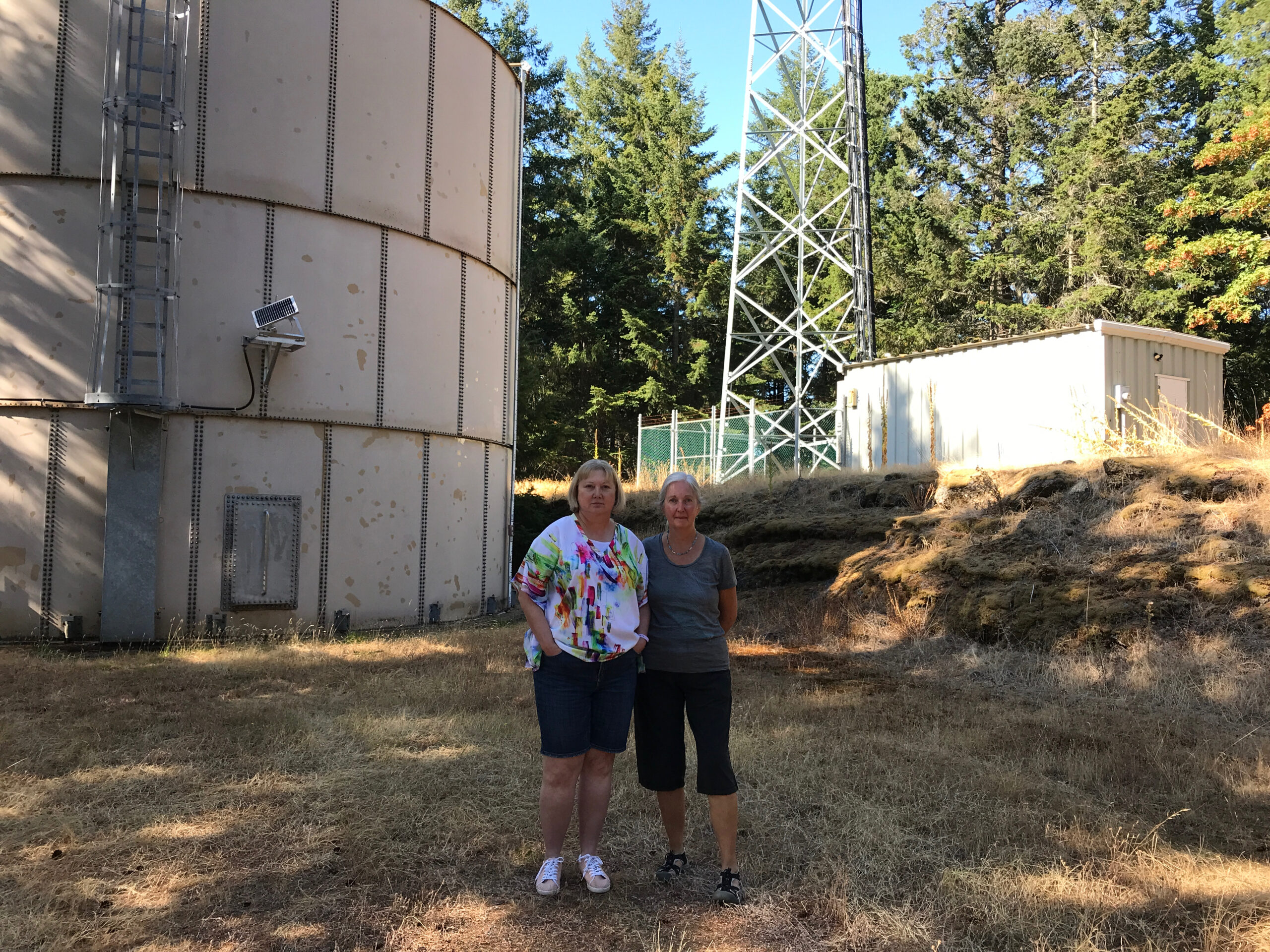Residents of Canvasback Place have vowed to do everything necessary to stop a new telecommunications tower from being installed virtually in their backyards, and are hoping to convince the Salt Spring Local Trust Committee to reverse its position on the tower as a starting point.
The LTC voted in July to submit a statement of concurrence to Innovation, Science and Economic Development Canada (ISED) on the joint application by Rogers Communications and CREST Emergency Communications to construct a new 40-metre (130-foot) tower on Channel Ridge. While that letter has already gone out, the LTC has now directed staff to investigate whether any other action should be taken.
“There’s a small group of us that are looking at what next steps may be,” resident Elaine Senkpiel told the Driftwood. “I think [group member] Julian Clark has put it very well when he said we’ll take any and all actions: political, media, potentially legal. We hope we don’t have to go that route, but we’re not going away.”
Residents including Senkpiel implored the LTC to reverse their decision at their Aug. 31 business meeting. Clark observed that under ISED regulations, Rogers could expand the tower height by up to 25 per cent without any further approval once it has been in existence for one year.
“A 40-metre tower exceeds (and 50 meters will vastly exceed) the surrounding tree height and will most likely require an aviation warning system, including a flashing red light that is active 24 hours a day,” Clark stated in a written submission. “Rogers simply stated they will comply with Transport Canada safety requirements, but they did not clearly state what those requirements will be.”
Clark additionally outlined potential harms to local residents’ health, property values and community aesthetics as reasons for a reversal.
Connie Nichols-Ledger’s Canvasback home lies directly downhill from an existing Telus tower close to where the new tower is proposed. The tower is buffeted by a large North Salt Spring Waterworks holding tank and some surrounding forest, although that was considerably thinned after the disastrous December 2018 windstorm. The neighbours estimate the new tower will be just 43 metres (145 feet) from Nichols-Ledger’s back property line and 55 metres (180 feet) from her back door.
Local governments are directed not to comment on the contentious issue of the potential health impacts of electro-magnetic radiation during the ISED referral process, as long as the proposal complies with Health Canada’s “Safety Code 6” parameters. However, Nichols-Ledger relies on a pacemaker to regulate electrical activity in her heart and to keep it pumping every day. Electromagnetic interference is a known risk for people like herself; people with pacemakers must stay two feet away from induction ovens, for example. Nichols-Ledger said the manufacturer will not guarantee her pacemaker’s functioning will not be impacted by the new tower.
“Maybe I’m naive, but I always thought the Trust was elected in order to look after our interests and the interests of the island. And it doesn’t just mean watersheds and ecology, etc., etc. It also means the average human being,” Nichols-Ledger said. “I’ve thought about this so much, and it just seems to me to be so inhumane not to do all of the work.”
Since talking to residents, Salt Spring trustee Peter Grove has expressed concern that the Rogers and CREST application may have been misleading and that due process on consultation was not followed. His fellow trustee Laura Patrick, who opposed the original statement of concurrence, has the opposite view.
“I did vote against it because I did visit the site and I did read the package,” Patrick said, noting she had voiced concerns about lack of direct consultation with area residents before the July 27 vote.
The Canvasback group has suggested the tower would be more appropriately sited on other undeveloped acreage nearby owned by the Onni Group, where roads and utilities were put in for an as-yet unconstructed Channel Ridge village site. The residents would also like to see the Salt Spring LTC follow telecommunications policy like the one the Galiano Local Trust Committee adopted in 2018, with its more cautious 500-metre siting setback and early consultation guidelines.
Rogers and CREST could have been required to provide a list of possible siting options under the Islands Trust’s model antenna strategy, which the Trust’s local planning committee developed in 2018 for local Trust committees to potentially adopt. Salt Spring does not currently have an approved policy of its own. Since the federal government revoked a letter of understanding with the Islands Trust some years back, ISED’s default consultation procedure applies.
LTC chair Peter Luckham suggested last week that community concerns about health and property values are not things the LTC can consider in its referral, so reviewing the decision again may not produce any new results. But he encouraged the LTC to work on how it addresses such applications in the future.
“Let’s get the model antenna strategy project on our work program and let’s get that work done. Even as is, it doesn’t require a lot of work. It’s better than nothing,” Luckham said.

